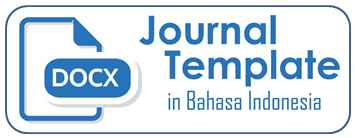HUBUNGAN KARAKTERISTIK PASIEN DENGAN DEPRESI PASKA STROKE PADA PASIEN DENGAN STROKE ISKEMIK DI JAKARTA
DOI:
https://doi.org/10.32524/jksp.v2i1.187Kata Kunci:
Post-stroke depression, ishemic stroke, ADRSAbstrak
Post-stroke depression is the most common mood disorder after stroke, and the main factor of recovery limitation and rehabilitation in stroke patients. Depression also negatively impacts stroke outcome with increased morbidity, mortality, and poorer functional recovery. This study aims to examine the characteristics of patients who can be associated with depression experienced in patients before and after 1 month undergoing a stroke rehabilitation program in the first 3 months after a stroke onset. This study used descriptive correlative with cross sectional approach, total sampling were 22 respondents using purposive sampling technique with inclusion criteria for stroke patients who had the first or second stroke, had hemiplegia in the upper and / or lower extremities less than 3 months, had a Muscle Manual Testing (MMT) score <4. Exclusion criteria for patients with Trans-ischemic attack and patients with a history of depression. The assessment tools contained demographic questionnaire, Aphasic depression rating scale (ADRS) and MMT. The results showed that age, educational background, and caregiver contributed to the score of depression (p <0,05). The health service center hoped will form a group of stroke survivors as a form of social support so that patients have more opportunities to communicate and support each other, and thus improve their physical abilities, and emotional well-being.












